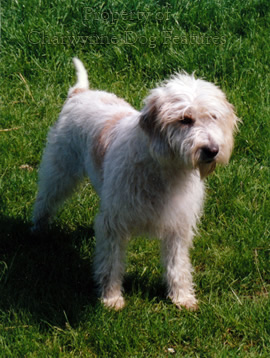933 BEATING WITH HOUNDS
BEATING WITH HOUNDS
by David Hancock

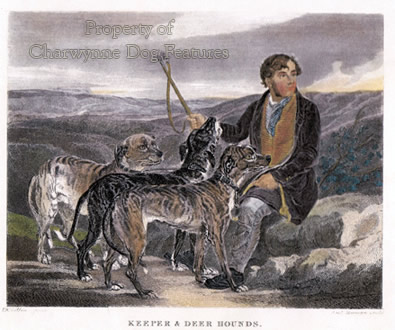
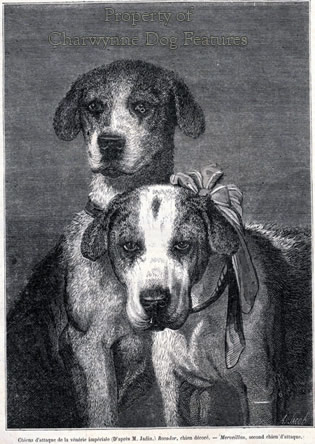
There have long been differences between the use of hounds in the hunting field on the Continent of Europe and in the British Isles. Some styles suit the terrain, the more heavily wooded areas in France being unsuitable for coursing, our deer stalking being suited to the wide-open moors of Scotland, and the existence of wild boar perpetuating their pursuit by hounds in France. In France too, the use of hounds as 'beaters' in a form of hunting called La Traque persists and offers a sporting use for a wide variety of hounds, the Griffon Vendeen types especially. The French verb traquer means to hunt out or surround and traque can be translated as 'beating up the game'! Many British sportsmen are familiar with chasse a tir, sometimes described as 'rough-shooting with hounds'. But this is usually a small group sport rather a military campaign in miniature.
We have long forgotten the use of seizers in the deer-hunt, with only the Scottish Deerhound being associated with deer-coursing, despite depictions, by such as Landseer, of the dogs used as seizers. Such dogs were sometimes fitted with 'armoured jackets' to protect them against the slashing, ripping action of any wild boar encountered in the mainland European hunt. Similarly in France today in La Traque expeditions, kevlar coats are used to deny tusk-connection with the dogs' torsos. French hunters use all types of sporting dogs, with Labradors and Irish Setters usually getting hurt through misguided zeal, and terriers killing the boar instead of driving it towards the waiting hunters! The whole purpose of La Traque is for the hounds to locate the game, track it and then drive it towards the hunters, with the hunting area being divided into a series of squares, with the hunters at the end of each one in turn. In essence, if on a much wider scale, this was how Genghis Khan trained his cavalry in the hunting field: hunting by gradual entrapment.


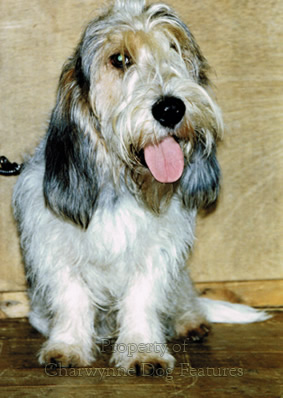
I understand that La Traque is only used by hunters in France; when they use human beaters they call it La Chasse Allemagne or German Hunt. The various Griffon Vendeen types away from France are increasingly being tested in field trials to assess hounds like the small Petit Basset Griffon Vendeen (PBGV) and the bigger Grand Basset Griffon Vendeen (GBGV) with the former more like the old Briquets Griffon Vendeen, longer-legged and less exaggerated. These Griffons are tested in their ability to track rabbits, to work as limers or leashed hounds to find wounded game and even in cold-boot hunting or man-trailing. Nicolette Jentink, who uses her GBGVs in the Netherlands, tells me that there the PBGV resembles the old Briquets with longer legs, shorter muzzles and ears, after inheritable diseases (epilepsy and a number of eye diseases) cropped up and purebred programmes were suspended, which is good sense if rarely applied away from the sporting field. One of her best GBGVs is a superb hunter but 47cms in height, whereas the French insist that the breed should be only 42cms. Her bigger dogs have the deeper voice of the Grand Griffon Vendeen or GGV (i.e. the biggest Vendeen variety, without the Basset blood).



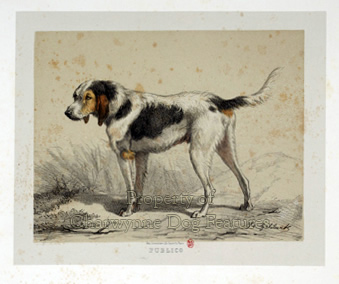
This Griffon Vendeen family was bred to cope with the rugged terrain of the Vendee and dense thorny vegetation, with testing weather variations. A hunting hound had to possess high scenting ability, great stamina and a coat resistant to bramble and thorn. The powerful harsh-coated Grand Griffon was gradually bred down to the shorter-legged Basset Griffon Vendeen and eventually sub-divided into the Petit Basset and the Grand Basset. Both sizes were used on a wide variety of game, from rabbit or hare, up to fox, deer and even wild boar. In the late 1880s the Dezamy family patronized both breeds, with the ’42 Dezamy’ tag still representing the 42 cms ideal maximum height. The Dezamy type displayed slightly longer legs, stronger bone and the more classic well-sculpted head. The Club du Griffon Vendeen catered for all four sizes of this type of French hound, with hunting trials established. This family of hounds can sometimes produce coat colour anomalies: one sable and white Petit dam producing black and tan and pale cream whelps, and a Grand producing fauve or chestnut offspring. French sportsmen have been known to use the blood of the Teckel and the Bleu de Gascogne in the pursuit of a hound more suitable for their country.
 OF 1902.jpg)
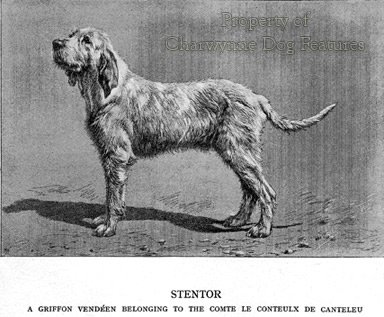
Here, the Petit Basset variety is now well established, but Betty Judge once imported some fine-looking Briquets and Grands (rather like Welsh Hounds) but I don't know of any take-up of these types, which is a pity because when I visited her kennels a decade or so ago, I was impressed by the soundness of her hounds. As each closed gene pool manifests its failings in so many purebred sporting dogs, away from the packs, outcross material has a vital role to play. The Griffons Vendeen, in various sizes, may specialise in beating but they should never be beaten by their own genes!
